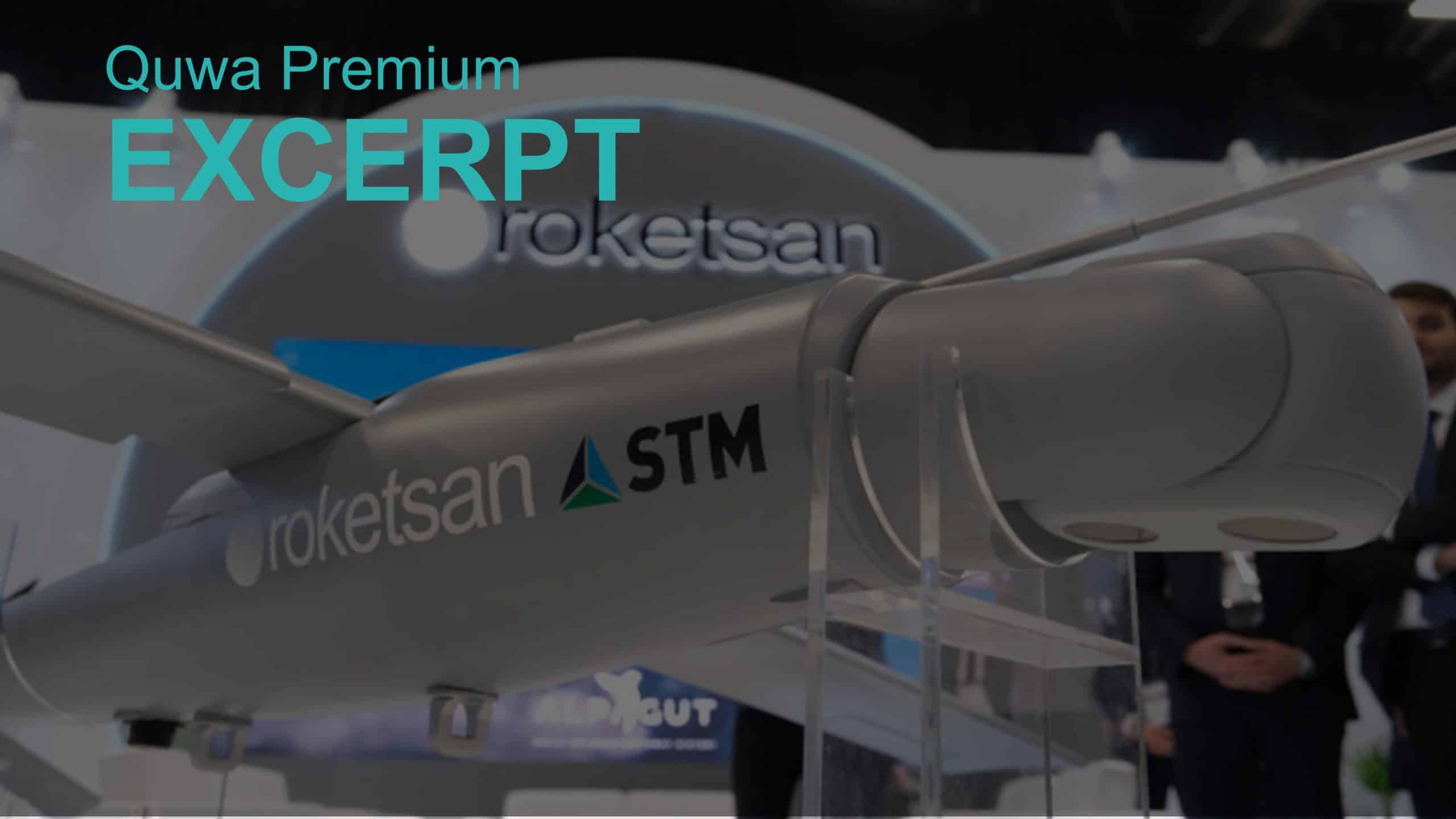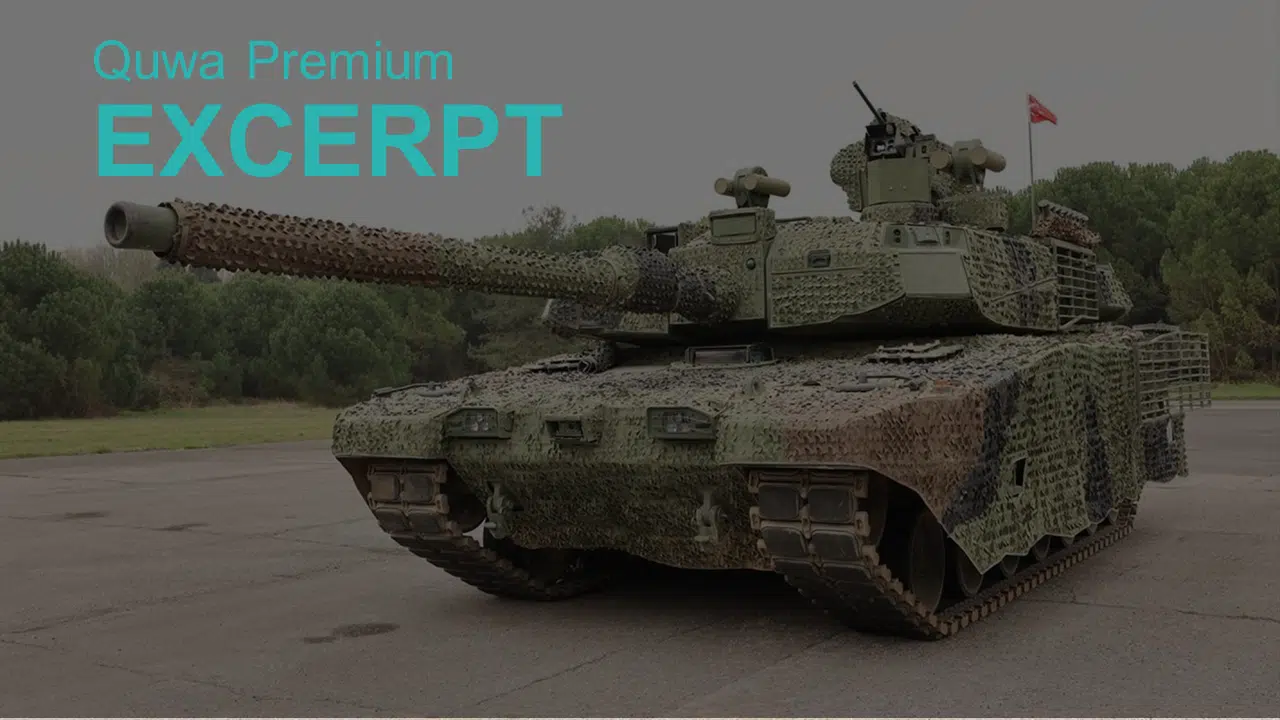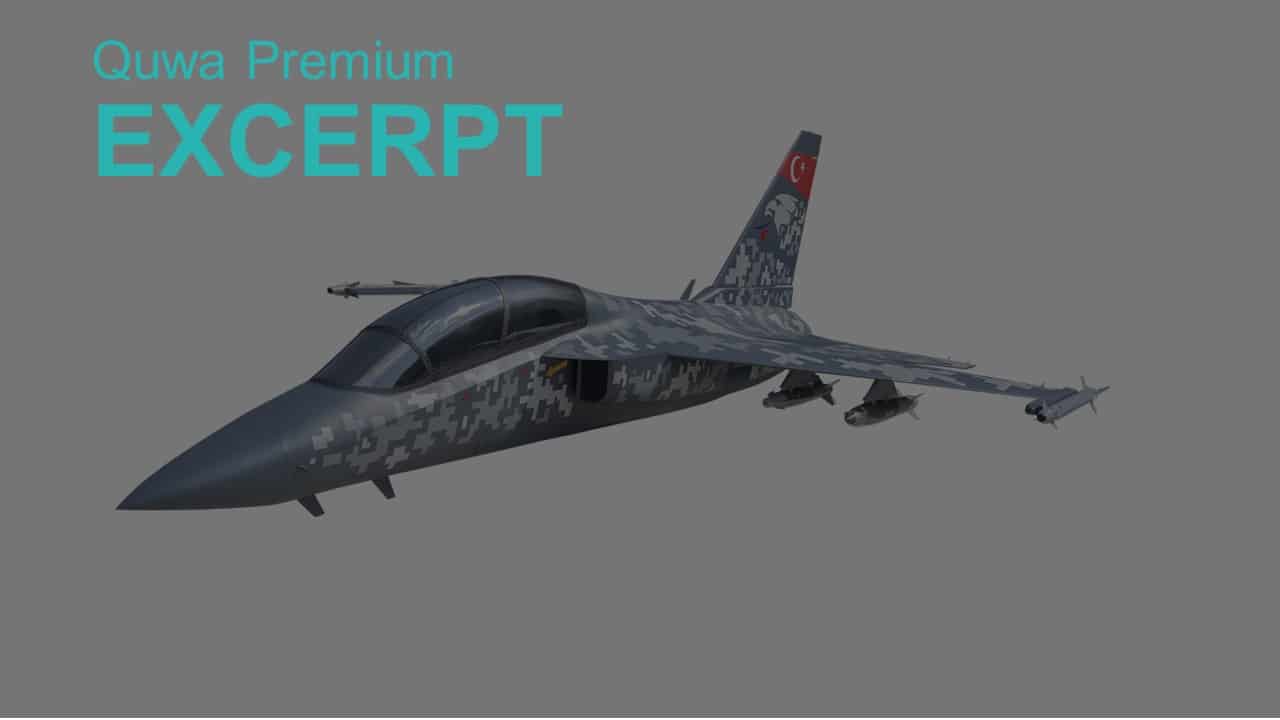1844Views

Turkey Provides Glimpses of its New Defence Projects
Towards the end of October, the Turkish showcased its growing line up of homegrown weapons, especially in terms of drones. Turkey is an established player in the unmanned aerial vehicle (UAV) space, but it may carve a leading spot in the unmanned ground vehicle (UGV) and unmanned surface vessel (USV) markets as well. However, drones are not the only area where Turkey is showing promise. Its bigger vendors – i.e., Aselsan and Roketsan – are working on marque aerospace projects as well.
More Drones
Alpagut Loitering Munition
STM and Roketsan are entering the loitering munition space with the “Alpagut.”
According to STM, the Alpagut weighs 45 kg, including an 11-kg warhead as well as guidance and seeker equipment. In terms of the latter, the Alpagut leverages a ‘two-mode’ seeker that offers resistance against enemy jamming techniques. In other words, it uses two seeker-types to ensure redundancy in case one is jammed. It is unclear what seekers the Alpagut uses, but a common application typically involves a radar and imaging infrared (IIR) seeker. This would generally cover most seeker-neutralization efforts.
STM did not unveil the range of the Alpagut. However, STM is aiming to have the Alpagut available as an air-launched application first. It is likely that Turkey’s forthcoming UAV models, like the Bayraktar TB3 and others, will be able to use the Alpagut. Surface-launched versions of the Alpagut will be available later…
End of excerpt. Subscribe to Quwa Premium to read the rest of this section.
Unmanned Anti-Submarine Warfare (ASW) Solution
Turkey’s Presidency of Defense Industries (SSB) revealed the MIR, an unmanned surface vessel (USV) that was designed for anti-submarine warfare (ASW). However, Aselsan and its private sector partner, Sefine, say that the MIR is a modular platform. Thus, the end-user can configure it for a variety of missions.
Like its other drone programs, Turkey is aiming to offer versions of the MIR that can be remote-operated or autonomous, based on user requirements. Once again, this speaks to the underlying point of Turkey’s vision for autonomous platforms. In the naval space, this could be a significant gamechanger.
USVs can offer a lower cost means of deploying radar, electronic intelligence, countermeasures against low-intensity threats, and special mission (e.g., ASW) nodes at scale. Currently, the bulk of these missions are handled by larger vessels, like corvettes and frigates. The latter concentrate these capabilities among fewer vessels which, potentially, limit coverage and situational awareness. USVs can help close potential gaps and weaknesses at scale. Moreover, when combined with AI/ML and big data, the end-user may be able to derive highly optimized deployment strategies…
End of excerpt. Subscribe to Quwa Premium to read the rest of this section.
Havelsan Unmanned Ground Vehicle (UGV)
Turkey’s other defence electronics giant, Havelsan, revealed the Kapgan ‘heavy class’ unmanned ground vehicle (UGV). Havelsan says that the Kapgan has a mass of 1,400 kg and a capacity of 600 kg. Interestingly, it uses an electric motor that offers a maximum speed of 25 km/hour and endurance of six hours…
End of excerpt. Subscribe to Quwa Premium to read the rest of this section.
Key Aerospace Projects
Roketsan Micro-Satellite Launch System (MUFS)
Turkey’s Roketsan is working towards launching miniature or micro satellites in low earth orbit (LEO) by around 2026. This will happen through an indigenous satellite launch vehicle (SLV)…
End of excerpt. Subscribe to Quwa Premium to read the rest of this section.
Aselsan Offers Glimpse of MMU/TFX’s Helmet-Mounted Display and Sight (HMD/S) System
Aselsan also revealed a hint of the helmet-mounted display and sight (HMD/S) system it is developing for Turkey’s next-generation fighter aircraft (NGFA), the MMU/TFX…
End of excerpt. Subscribe to Quwa Premium to read the rest of this section.
End of Excerpt (536/1,159 words)
You can read the complete article by logging in (click here) or subscribing to Quwa Premium (click here).


